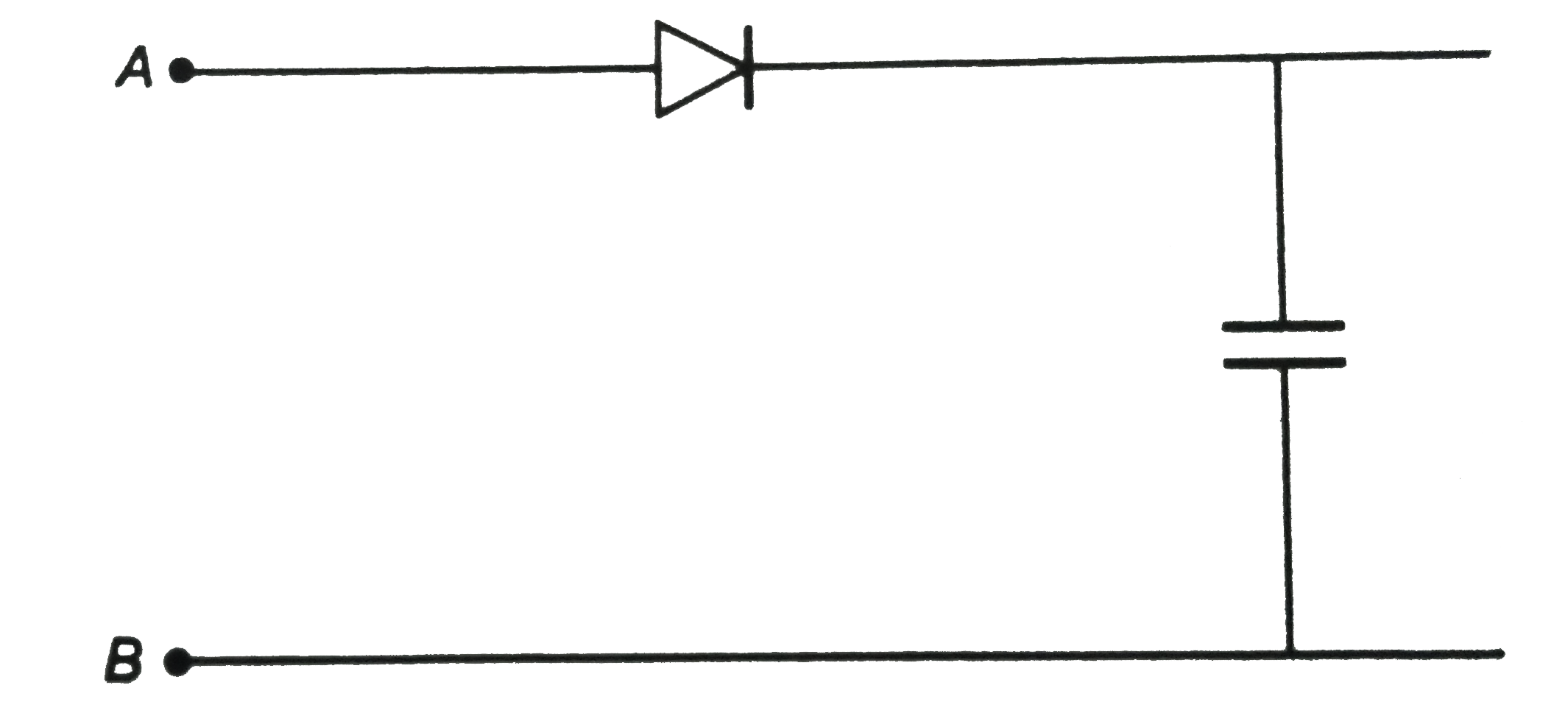The rated values of two bulbs are and . Find actual power consumed by both of them of they are connected in
a. series
b. Parallel
and potential difference is applied across both of them.
To solve the problem of finding the actual power consumed by two bulbs with rated values (P1,V) and (P2,V) when connected in series and parallel, we can follow these steps:
Step 1: Determine the Resistance of Each Bulb
The resistance of each bulb can be calculated using the formula:
R=V2P
For bulb 1:
R1=V2P1
For bulb 2:
R2=V2P2
Step 2: Calculate Total Power in Series
When the bulbs are connected in series, the total resistance Rnet is the sum of the individual resistances:
Rnet=R1+R2=V2P1+V2P2
Now, substituting Rnet into the power formula P=V2Rnet:
Ptotal, series=V2Rnet=V2(V2P1+V2P2)
Factoring out V2:
Ptotal, series=V2V2(1P1+1P2)=1(1P1+1P2)
Thus, the total power consumed in series is:
1(1P1+1P2)
Step 3: Calculate Total Power in Parallel
When the bulbs are connected in parallel, the total resistance Rnet can be calculated using:
1Rnet=1R1+1R2
Substituting the resistance values:
1Rnet=P1V2+P2V2
Thus:
Rnet=V2P1+P2
Now, substituting Rnet into the power formula:
Ptotal, parallel=V2Rnet=V2V2P1+P2=P1+P2
Final Answers
- Power consumed in series:
Ptotal, series=1(1P1+1P2)
- Power consumed in parallel:
Ptotal, parallel=P1+P2
The resistance of each bulb can be calculated using the formula:
R=V2P
For bulb 1:
R1=V2P1
For bulb 2:
R2=V2P2
When the bulbs are connected in series, the total resistance Rnet is the sum of the individual resistances:
Rnet=R1+R2=V2P1+V2P2
Now, substituting Rnet into the power formula P=V2Rnet:
Ptotal, series=V2Rnet=V2(V2P1+V2P2)
Factoring out V2:
Ptotal, series=V2V2(1P1+1P2)=1(1P1+1P2)
Thus, the total power consumed in series is:
1(1P1+1P2)
When the bulbs are connected in parallel, the total resistance Rnet can be calculated using:
1Rnet=1R1+1R2
Substituting the resistance values:
1Rnet=P1V2+P2V2
Thus:
Rnet=V2P1+P2
Now, substituting Rnet into the power formula:
Ptotal, parallel=V2Rnet=V2V2P1+P2=P1+P2
- Power consumed in series:
Ptotal, series=1(1P1+1P2)
- Power consumed in parallel:
Ptotal, parallel=P1+P2
Topper's Solved these Questions
- CURRENT ELECTRICITYBook:DC PANDEY ENGLISHChapter:CURRENT ELECTRICITYExercise:Example Type 6
Explore 1 Video
- CURRENT ELECTRICITYBook:DC PANDEY ENGLISHChapter:CURRENT ELECTRICITYExercise:Miscellaneous Examples
Explore 9 Videos
- CURRENT ELECTRICITYBook:DC PANDEY ENGLISHChapter:CURRENT ELECTRICITYExercise:Example Type 4
Explore 1 Video
- COMMUNICATION SYSTEMBook:DC PANDEY ENGLISHChapter:COMMUNICATION SYSTEMExercise:Subjective
Explore 11 Videos
- ELECTROMAGNETIC INDUCTIONBook:DC PANDEY ENGLISHChapter:ELECTROMAGNETIC INDUCTIONExercise:Medical entrances gallery
Explore 25 Videos
Similar Questions
A 220 V AC supply is connected between points A and B . What will be the potential difference V across the capacitor ?

View SolutionA 220 V AC supply is connected between points A and B . What will be the potential difference V across the capacitor ?

View SolutionA 220 V AC supply is connected between points A and B . What will be the potential difference V across the capacitor ?

View SolutionTwo capacitances of capacity C1and C2 are connected in series and potential difference V is applied across it. Then the potential difference across C1 will be
View SolutionTwo electric bulbs one, if 200 V-40 W and other 200 V-100 W are connected in series to a 200 V line, then the potential drop across
View SolutionA 220 V A supply is connected between points A and B in figure. What will be the potential difference V across the capacitor?
View SolutionTwo bulbs are reled (P1,V) and (P2,V). If they are connected (i) in series and (ii) in perallel across a supply V, find th power dissipated in the two combinations in terms of P1 and P2.
View Solution4μF capacitor is charged to 150 V and another capacitor of 6μF is charged to 200 V. Then they are connected across each other. Find the potential difference across them. Calculate the heat produced.
View Solution4μF capacitor is charged to 150 V and another capacitor of 6μF is charged to 200 V. Then they are connected across each other. Find the potential difference across them. Calculate the heat produced.
View SolutionTen 60 W, 220 V bulbs are connected in series to 220 V supply . Power consumed in the circuit is
View Solution